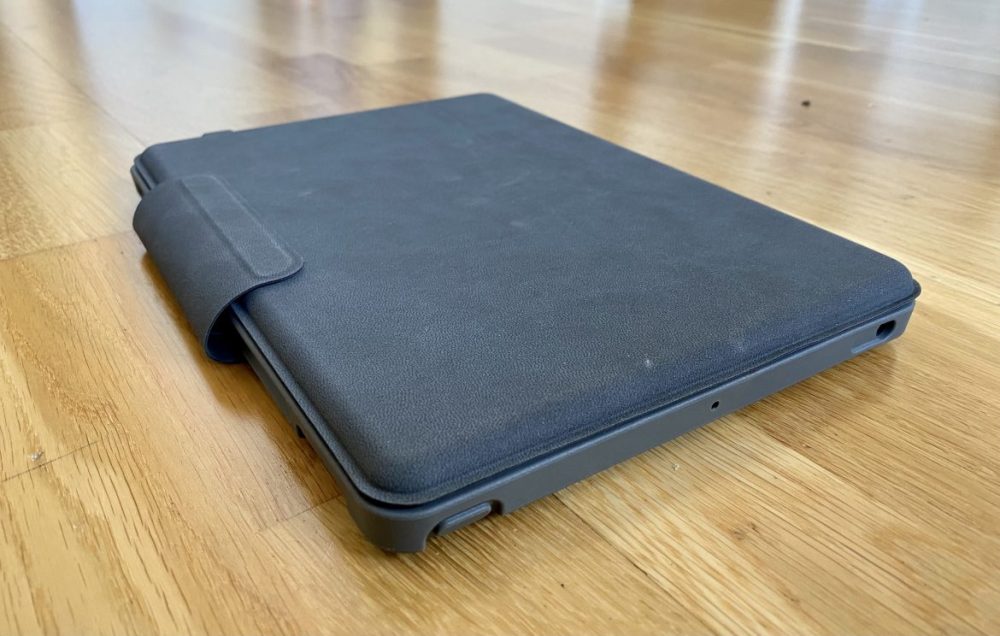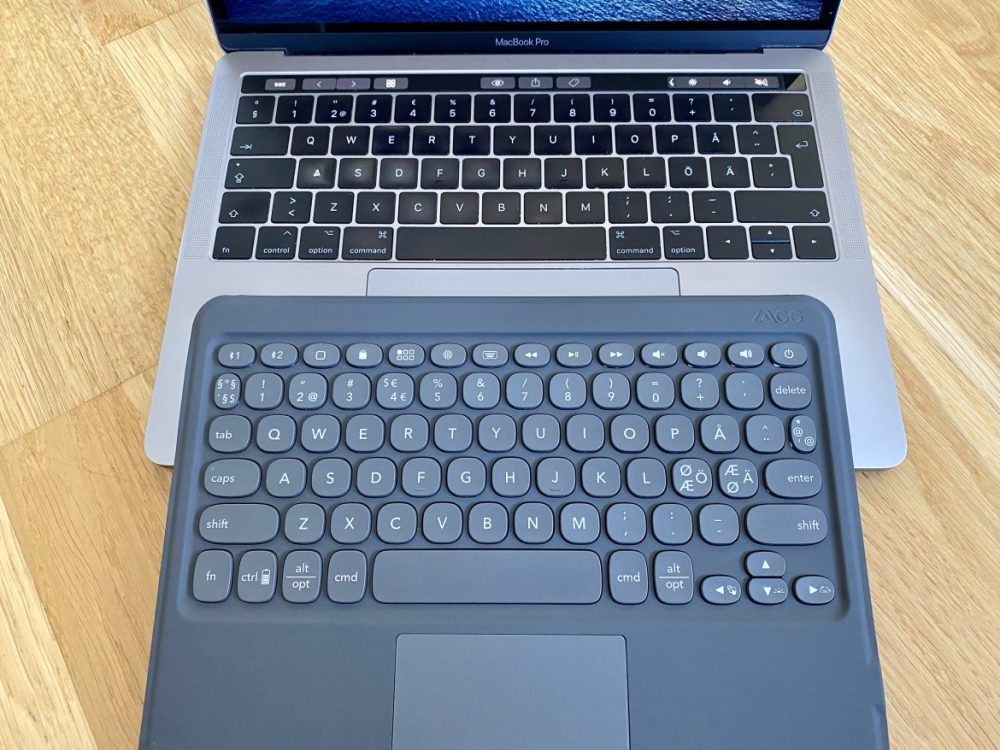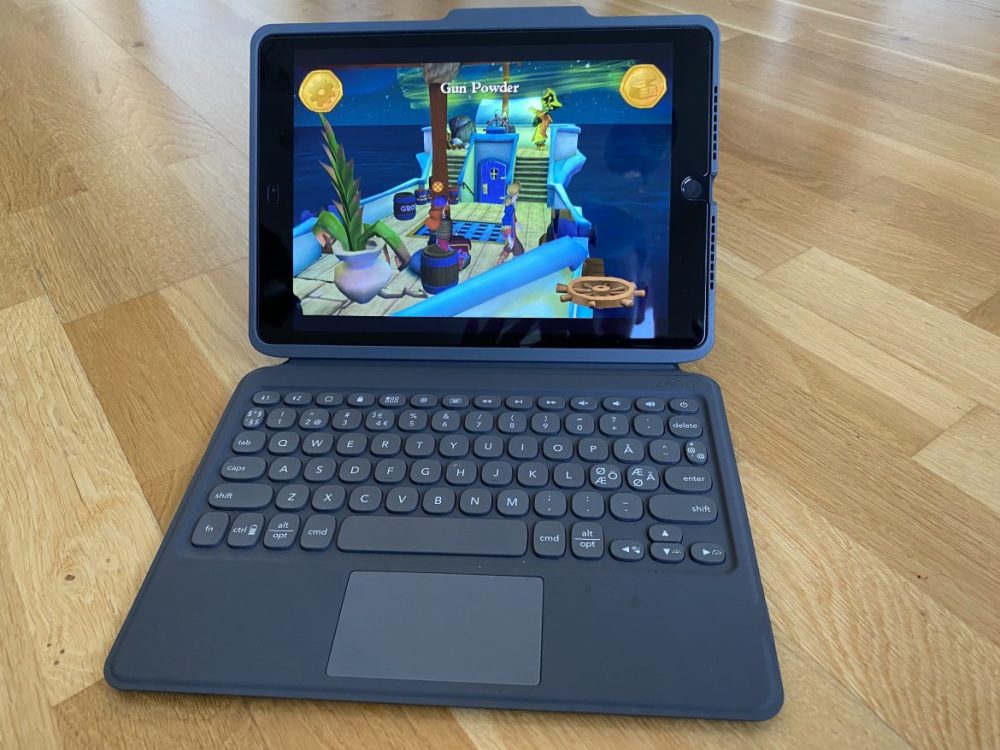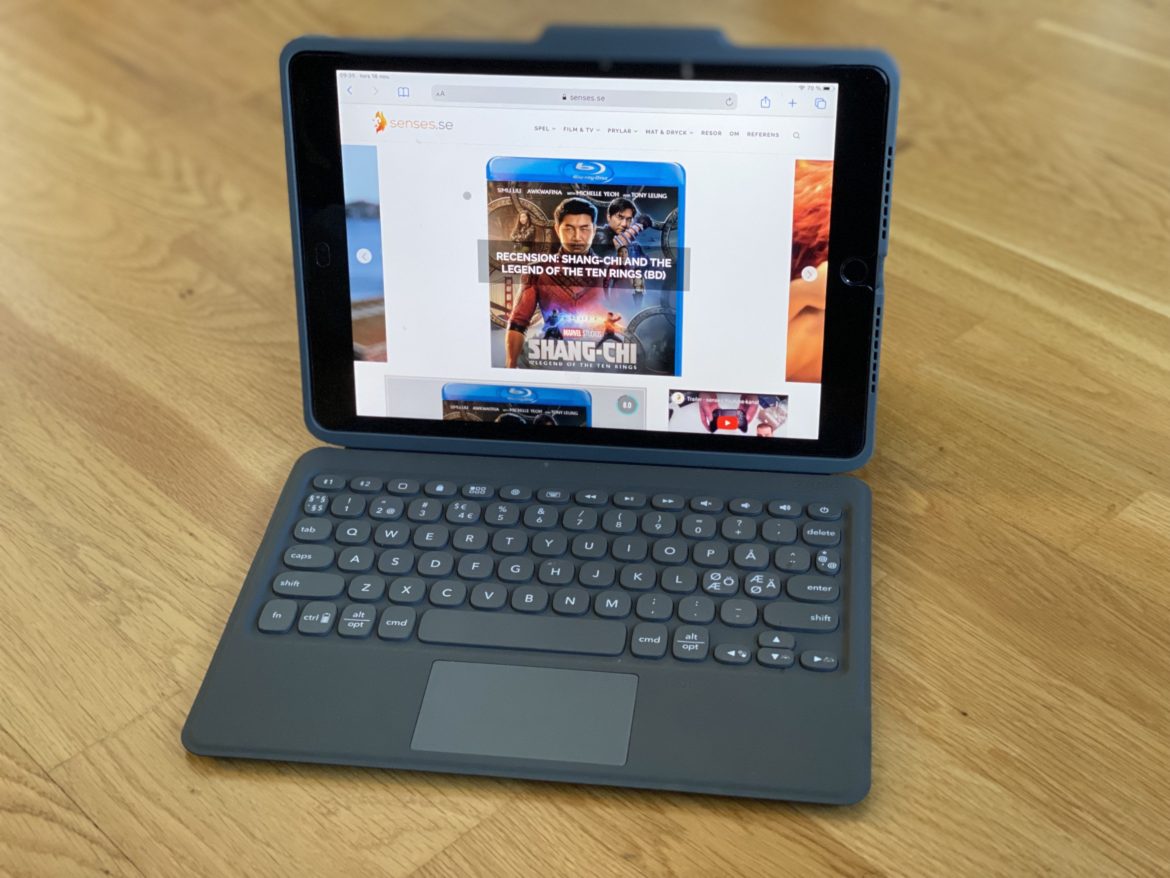TL;DR
Thinking about ditching your laptop for an iPad but need a better typing experience? This review dives into the ZAGG Pro Keys, a Bluetooth 5.0 keyboard case with a built-in touchpad for your iPad. It offers a laptop-like feel with backlit keys and a protective case, even featuring an Apple Pencil slot. While it boasts dual-device connectivity and improved audio routing, minor gripes include limited screen adjustability and occasional connection hiccups, though software updates address some issues. Could this be the perfect companion to transform your iPad into a productivity powerhouse? Read on to find out.
Apple has pioneered numerous innovations. However, the concept of a portable computer featuring a detachable screen – a feature many now expect as standard due to the prevalence of touch screens – was initially popularized on a large scale by Microsoft’s Surface line. Apple’s MacBook Pro maintains the conventional design with a fixed, foldable screen and keyboard, lacking touch screen functionality (though the new M1 chips are expected to improve performance). The iPad Pro has served as the company’s “pro model,” often considered expensive relative to a traditional portable computer, which offers benefits like expanded storage and more sophisticated operating systems. For users who don’t require the full power of a laptop, prioritize extended battery life, and wish to avoid the high cost of a Pro model (especially considering the need for a separate keyboard), a classic iPad paired with a quality Bluetooth keyboard presents a viable middle ground. This raises the question: can the ZAGG Pro Keys be that keyboard?
The Pro Keys isn’t ZAGG’s first Bluetooth keyboard for the iPad; we’ve used one with our iPad mini for several years. This new model introduces two significant updates: it utilizes a modern, faster, and more efficient Bluetooth 5.0 codec (with 128-bit encryption for enhanced security) and incorporates a touchpad, similar to those found on laptops, providing mouse/pointing device functionality for both productivity and leisure.

The Zagg Pro Keys comprises two main components: the keyboard itself, featuring a magnetic, foldable section, and a rubberized case designed to protect your iPad (available for the standard 10.2″ iPad and 10.9″/11″ Pro models). This case is designed to withstand drops from up to two meters (assuming it doesn’t land screen-down). The rubber holder also includes a dedicated slot for an Apple Pencil (or a compatible third-party stylus, such as ZAGG’s own Pro Stylus). The design is fairly standard for iPad cases with foldable covers. While ZAGG’s website may suggest greater flexibility in adjusting the iPad’s tilt and height for a more laptop-like viewing experience, we were unable to achieve this in practice, and the manual provides no specific instructions. The cover folds to provide an approximate 45-degree angle, which works well for most applications. The keys are comfortable and responsive, with optional backlighting (which will impact battery life). The touchpad functions as expected (indicated by a small, gray circle), proving useful for point-and-click interactions in applications like Tales of Monkey Island (though direct touchscreen input may be faster for certain tasks). As is typical, the keyboard is slightly smaller than a standard laptop keyboard, but not significantly so (see image below). A notable feature is the ability to connect the Pro Keys to two devices simultaneously via Bluetooth, allowing for quick switching between inputs. This effectively provides a compact and fully functional external keyboard and mouse solution for computers (both desktop and laptop, if needed).
An interesting design element is the cover’s attempt to redirect audio forward through cut-out holes facing the user (instead of to the side, as is common on iDevices). The practical impact on sound quality is debatable (high-quality headphones are generally recommended for optimal audio and to minimize disturbance to others), but the intention is commendable.

With a price point of around a thousand, the ZAGG Pro Keys offers considerable value and few drawbacks. The primary limitations stem from iPadOS itself, rather than the keyboard. However, the iPad can perform a surprising number of tasks effectively, including Office applications, iMovie editing, and access to web-based services (requiring an internet connection, of course). We did encounter an initial issue with the wake function in the first few weeks of use, which was subsequently resolved via a software update (available through a dedicated app). Occasionally, after a period of inactivity, the keyboard would fail to connect seamlessly with the tablet or computer, requiring multiple keystrokes or a restart to re-establish the connection. While not a critical flaw, as it didn’t occur consistently and was addressed by the software update, it detracted slightly from the overall experience of an otherwise impressive product. (Credit to ZAGG for providing software updates for this type of device.)

In conclusion, considering its overall functionality, features, and the convenience of carrying an iPad with this keyboard as an alternative to a full-fledged computer (which consumes more power), the ZAGG Pro Keys earns a near-perfect score. The somewhat limited adjustability of the stand and the initial wake function issue were minor drawbacks, but the latter’s easy resolution prevents it from significantly overshadowing what is otherwise a highly competent and affordable product that expands the utility of your iPad.

